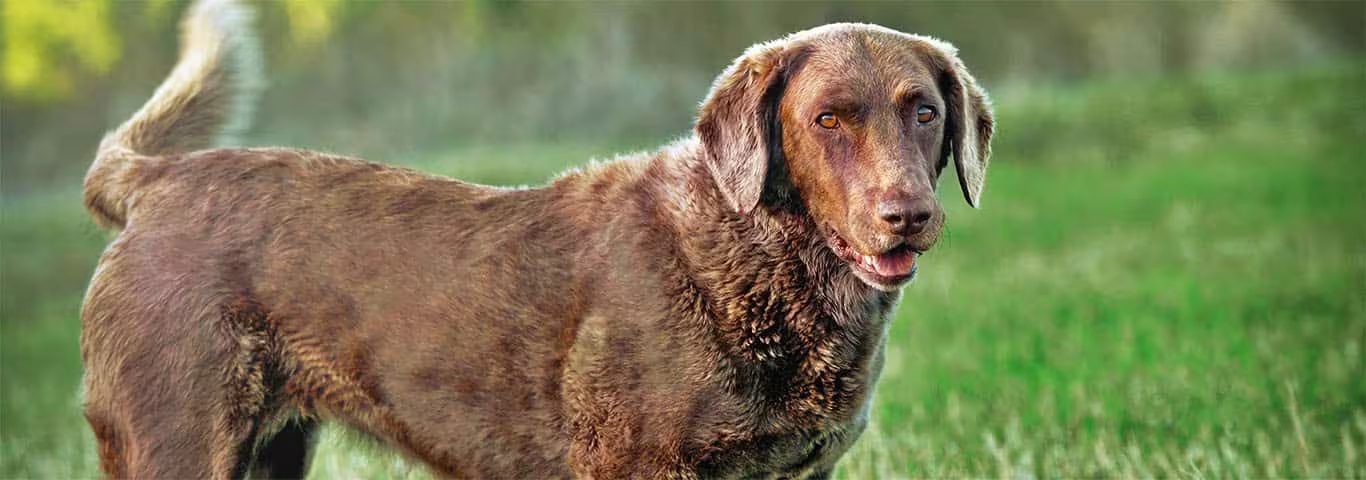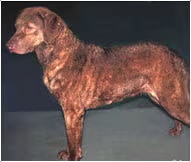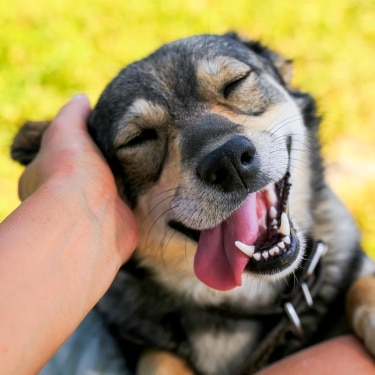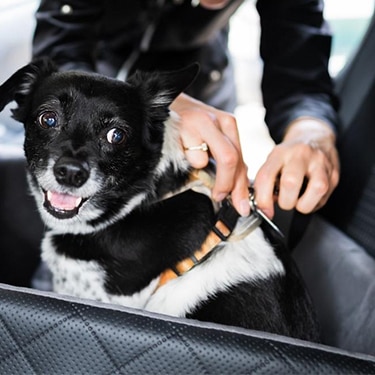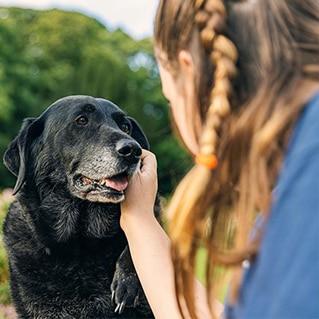Chesapeake Bay retrievers are gracefully proportioned. The head is round and broad. The jaws are long enough to grasp game birds, and short enough to ensure a strong grip. The hanging ears are smallish and set well up on the head. The body and tail are medium in length. The chest is deep and wide. A distinctive feature is that the hindquarters are at least as high, and often higher, than the shoulders.
The breed is known for its water-resistant, double coat. The outer coat is short and wavy; the undercoat is fine and wooly and contains natural oils that help protect the dog during the long cold swims required for duck retrieving. The coat ranges in camouflage colors from dark brown to tan or the color of dead grass. Some Chessies have white spots. The Chesapeake Bay retriever also has a characteristic yellowish or amber eye color.
Chesapeake Bay retrievers are not as gregarious as most other retriever breeds. Nonetheless, they generally like children and most are friendly to strangers. They also tend to get along with other animals, although some Chessies have demonstrated aggression toward other dogs.
The breed does not bark excessively, nor are Chessies considered particularly excitable. In fact, the breed is considered to be even-tempered.
Some breed experts report that Chesapeake Bay retrievers are easy to train and housebreak. Others say that some of these dogs can be strong-willed, that obedience training is strongly recommended, and that the Chessie may not be the best breed for novice dog guardians.
Chesapeake Bay retrievers are sporting dogs and require a considerable amount of exercise. Consequently, they do very well living in areas where they can romp, swim and hunt. However, they can adapt to urban life if the guardian is willing to provide long walks. Occasional trips to places where the dog can swim and fetch toys or sticks is ideal, since these dogs are avid water lovers and retrievers.
Chesapeake Bay retrievers are protective of their guardians and are considered moderately good watch dogs. They require minimal coat care, but grooming with a rubber brush occasionally is advised to help keep the coat in good condition and to control oil in the coat. Chessies shed, but less than many other large dogs.
The Chesapeake Bay retriever history began in 1807 when two Newfoundland puppies were rescued from a distressed British ship off the coast of Maryland. The dogs proved to be excellent duck retrievers and were crossed with other dogs, possibly flat-coated and curly-coated retrievers. The offspring also were excellent retrievers. By the mid-1880s, the breed was reportedly used to retrieve up to 300 ducks daily and became known as the Chesapeake Bay retriever. Enthusiasts of the breed informally refer to this breed as "Chessies."
The breed received AKC recognition in 1885. Although the Chesapeake Bay retriever is a sporting dog, the breed also has been used as a guide dog for the blind and is considered to be an excellent companion.
Adopt a pet. Change a life.
Are you prepared to adopt a pet? Use these tools to make sure you are ready for the commitment.
Adopt a pet. Change a life.
Are you prepared to adopt a pet? Use these tools to make sure you are ready for the commitment.












